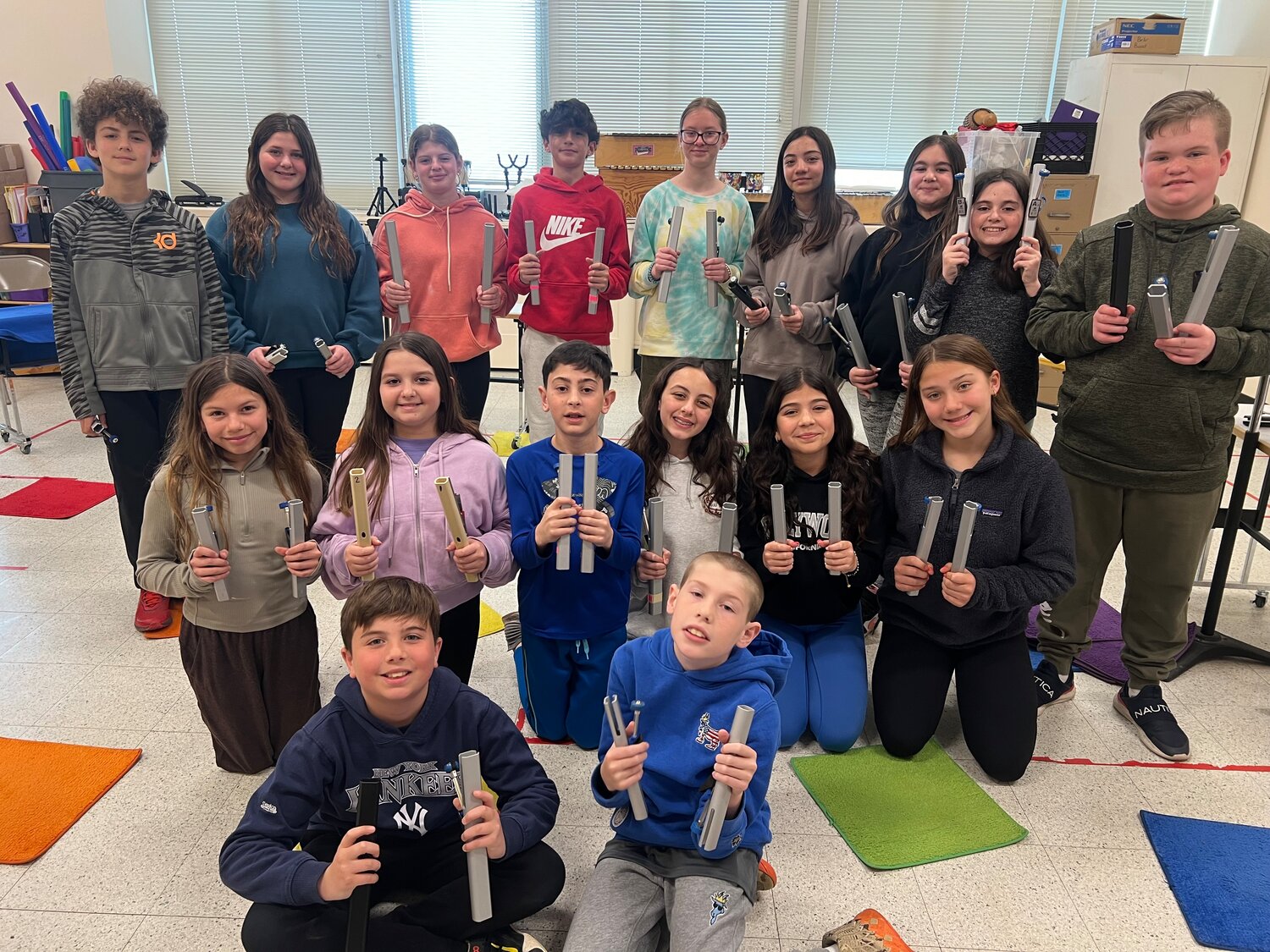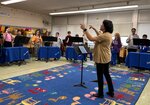Music in Our Schools Month has students and staff feeling the beat
In the North Bellmore School District’s elementary schools, students and staff embraced National Music in Our Schools Month, celebrated in March. Created by the National Association for Music Education, the nationwide event raises awareness of the importance of children’s access to a quality music education.
Students at the district’s five elementary schools, one in North Merrick and four in North Bellmore, beginning in kindergarten. Some of the teachers shared what children have been learning throughout the year, and the special things that took place in March.
“For Music in Our Schools month, we talk with all the students about why we have music education, the way that it develops our brains and helps us get stronger in our thinking,” Alexander Roff, the general music and chorus teacher at Martin Avenue and Newbridge Road elementary schools, said. “It is a way that we express emotion and create music with feelings or intention. Students are making and singing music and assessing or relating what they are sing to how they feel and the impact it has on their education”
Younger children begin their music education by learning to read music and about different beats, and a singing versus a speaking voice. Third-graders learn to play the recorder, their first chance to take part in an ensemble. Beginning in fourth and fifth grade, students can try a band or orchestra instrument, which is considered a music elective, while still taking general music classes. In sixth grade, they can begin learning to write their own music.
At Park Avenue and John G. Dinkelmeyer elementary schools, sixth-graders have a special opportunity to audition for a hand chime ensemble, under the directorship of Carol Ng, the general music and chorus teacher at both schools.
Hand chimes are tuned square tubes with an external clapping mechanism, rung by hand, similar to bells. Ng explained that the chimes are initially used in her classroom to teach music theory, and that learning to play them in a group promotes teamwork. The chimes are played individually rather than in unison, she said, and each student is responsible for the chimes assigned to them.
Ng began the hand chime ensemble a decade ago at Park Avenue, and about five years ago at Dinkelmeyer. Before she came to North Bellmore, she taught in parochial schools, where hand chime playing is more common than in public schools.
Students begin learning to play the chimes in her general music classes, and can then audition to be part of the ensemble.
There are 23 students in Park Avenue’s ensemble, and 20 in Dinkelmeyer’s.
“Through ringing, students increase their independent thinking, listening skills, attention span, physical coordination, self-discipline and personal expression,” Ng told the Herald. “Students also gain social and emotional skills through collaboration and the development of self-esteem.”
The hand chime ensembles perform at winter and spring concerts.
Across the district, a talented group of sixth-graders are part of the Saw Mill Road Elementary School’s Festival Chorus, which Roff leads with Maritza Lopez, the general music and chorus teacher. Based on students’ choral performance in their music classes, they are selected by the teachers to take part in the ensemble, which includes kids from each of North Bellmore’s schools.
The group practices on Monday afternoons at Newbridge Road.
“The Month of Music is really just celebrating what we already do all year,” Lopez said, “but making a spotlight on the little musicians that we’re developing here in North Bellmore.”
The Festival Chorus gave a special performance at the Board of Education meeting on March 14, for which it had been rehearsing for a month, Lopez said.
“They performed a song in Spanish, and they performed another song that was an All-County piece,” she said.
“We had some student speakers speak about what music means to them. We were able to put together a nice showcase, displaying what music means to everybody, because it really does mean something — especially to those kids who really, really love it, and want to continue it when they go on to middle school.”









